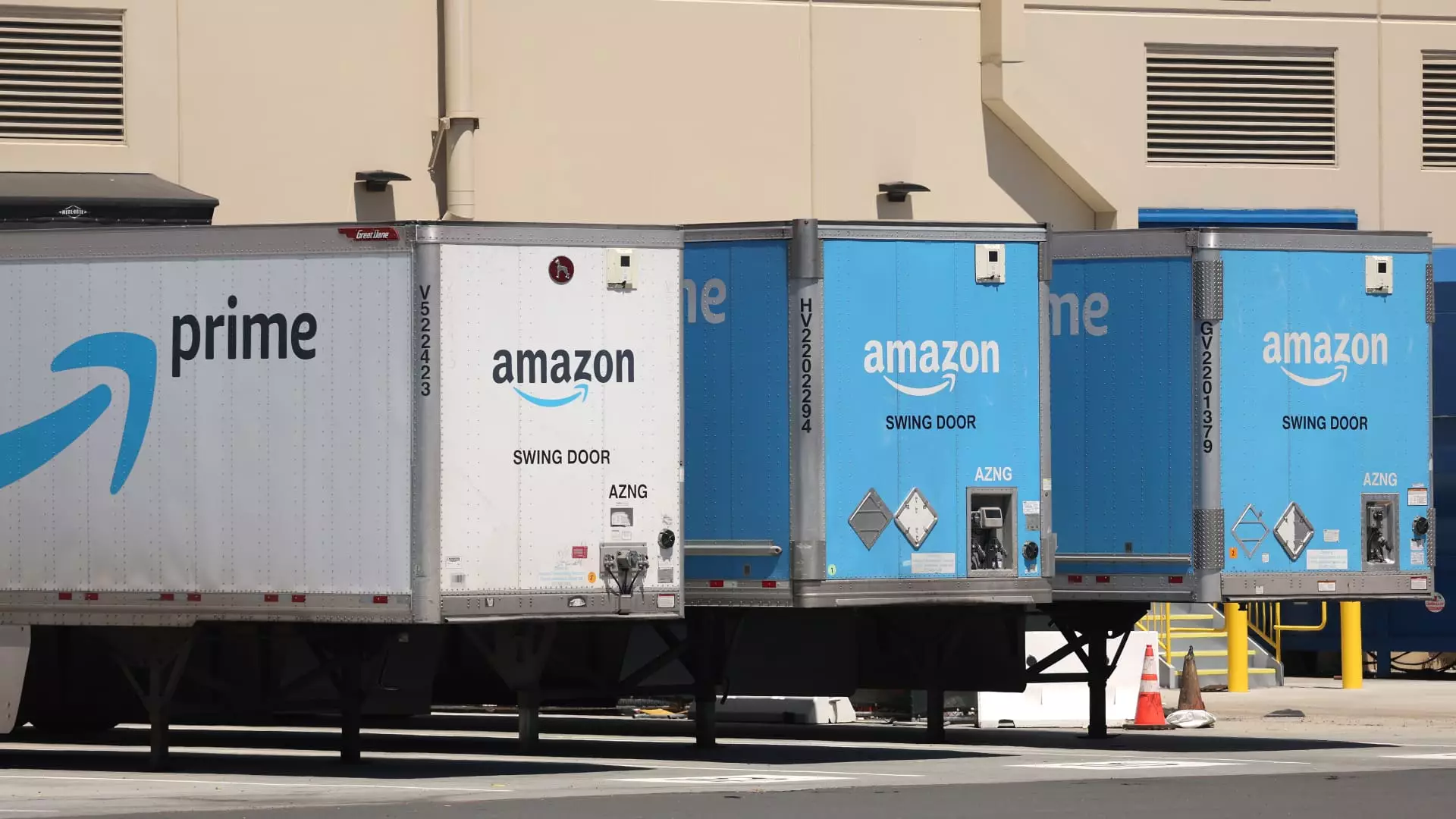The revelation from the Department of Justice (DOJ) regarding an Armenian organized crime syndicate that allegedly pilfered over $83 million from Amazon highlights a deeply troubling phenomenon in the retail sector: cargo theft. This scheme, which involved posing as legitimate truck drivers, represents not merely an isolated incident of criminality, but rather a calculated breach of trust between businesses and consumers that underscores the vulnerabilities within the logistics and supply chain framework.
Beginning as early as 2021, the meticulously orchestrated operation showcased how fraudsters exploited Amazon’s transport mechanisms — utilizing applications like Amazon Relay meant to streamline freight distribution. By manipulating this system, those involved diverted goods intended for Amazon warehouses, siphoning off everything from household appliances to electronics, effectively turning legitimate commerce into a lucrative avenue for theft. The complaint indicates that members of this crime ring operated under multiple transport carrier names such as AK Transportation and Markos Transportation, blurring the lines of legality while robbing millions from one of the world’s largest e-commerce platforms.
The Broader Impact of Cargo Theft on the Retail Landscape
The implications of such thefts extend far beyond the staggering monetary loss. Experts speculate that cargo theft across the United States incurs yearly losses approaching an eye-watering $1 billion. This statistic raises alarming questions about the safety and integrity of products circulating within the e-commerce ecosystem. For retailers and consumers alike, the notion that their purchases might emerge from criminal channels dampens confidence in online shopping, an essential component of modern life.
While companies like Amazon actively engage in countermeasures to obliterate such deceptive practices, challenges remain. Efforts to track and eliminate fraudulent sales and return damaged reputations are constant undertakings. The DOJ’s investigation—led with the help of Amazon teams—paints a picture of a complex battle against organized crime, rendering retail operations increasingly susceptible to complicated criminal networks that thrive on loopholes in the system.
The Cost of Inaction
Amazon’s decision to suspend numerous third-party sellers caught up in the fallout of these thefts, many of whom claimed ignorance, invites further scrutiny of the retail model. This situation poses severe threats to small businesses that rely on Amazon’s marketplace. Without timely and reliable information dissemination, these vendors risk unfair reputational damage, caught in the crosshairs of a larger criminal agenda.
This gray area of accountability raises significant ethical questions about fairness and diligence within the e-commerce space. Should platforms assume greater responsibility in regulating seller behavior, or does the burden fall squarely on sellers to ensure their legitimacy? The fallout from cargo theft reverberates throughout the retail landscape, demanding a cohesive strategy to secure and uphold integrity while balancing market accessibility.
Beyond Cargo: How Criminality Intersects with Broader Malfeasance
Remarkably, the allegations against this organized crime syndicate extend far beyond cargo theft. The DOJ’s investigation has unveiled connections to a host of criminal activities, including attempted murder and illegal possession of firearms. Such revelations throw the spotlight on an alarming intersection of diverse criminal enterprises that undermine societal welfare, with retail theft acting as merely one facet of a much more extensive network of violence and fraud.
This troubling juxtaposition raises potential alarm bells for law enforcement agencies and communities alike. As crime rings become more sophisticated, creating a culture of fear that normalizes crime across various sectors becomes a tangible risk. Retail theft no longer exists in isolation; it becomes a puzzle piece in a larger narrative of societal decay that risks reshaping the perception of safety in public transactions.
Future Strategies: A Call for Vigilance
As the DOJ continues its crackdown on entities involved in this multifaceted web of criminality, it uncovers a crucial lesson: vigilance, transparency, and collaboration are paramount. Retailers must engage in proactive measures, both in terms of technology and policy, to not only shore up defenses against theft but also to advocate for policies that bolster integrity across the supply chain.
In this new chapter of online commerce, cultivating a secure environment for both businesses and consumers is a cooperative endeavor that can stem the tide of organized crime. Ultimately, as the retail industry grapples with these emerging threats, the quest for security within the digital marketplace must remain relentless, navigating the shadows where deceit looms and opportunity awaits.

